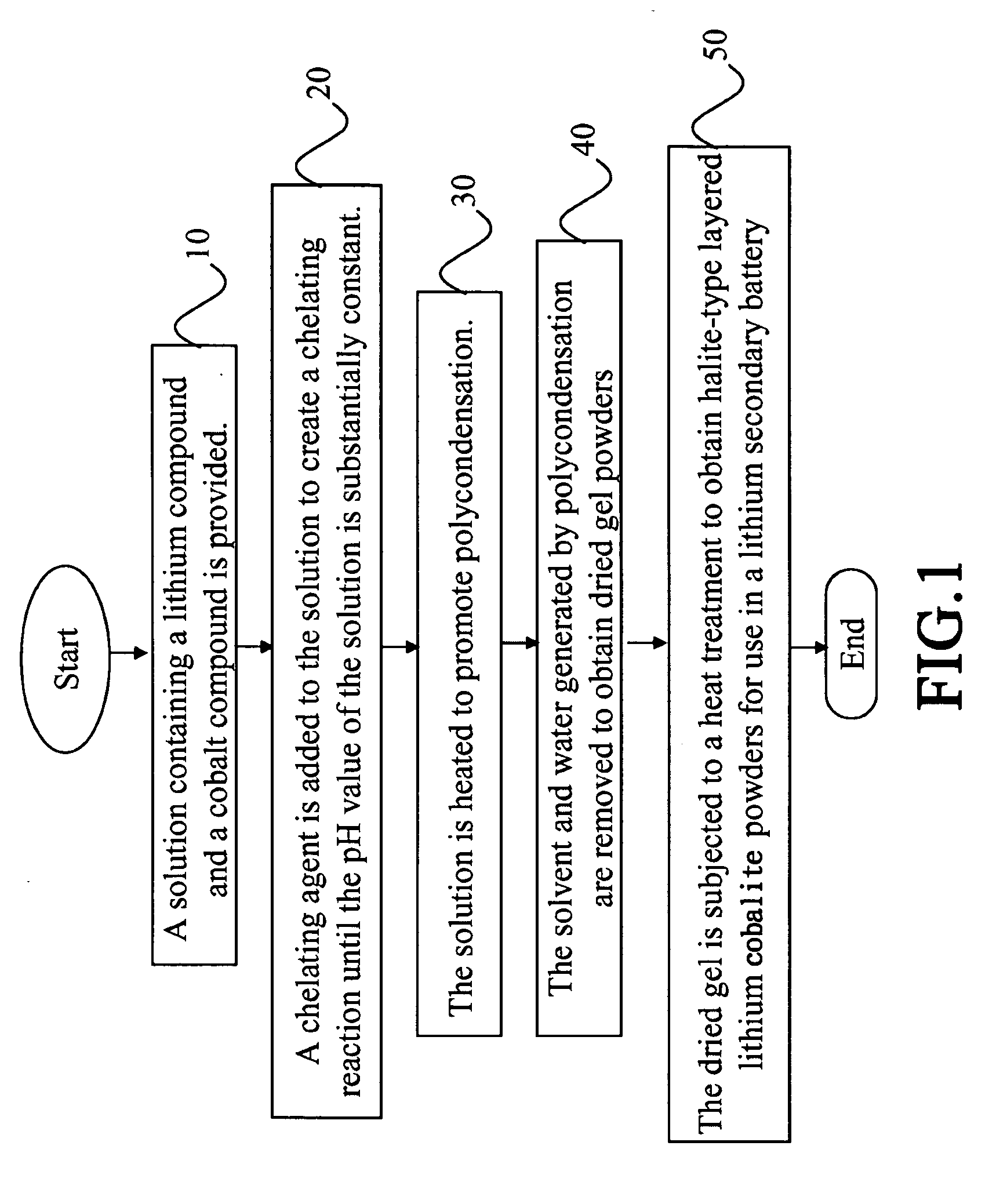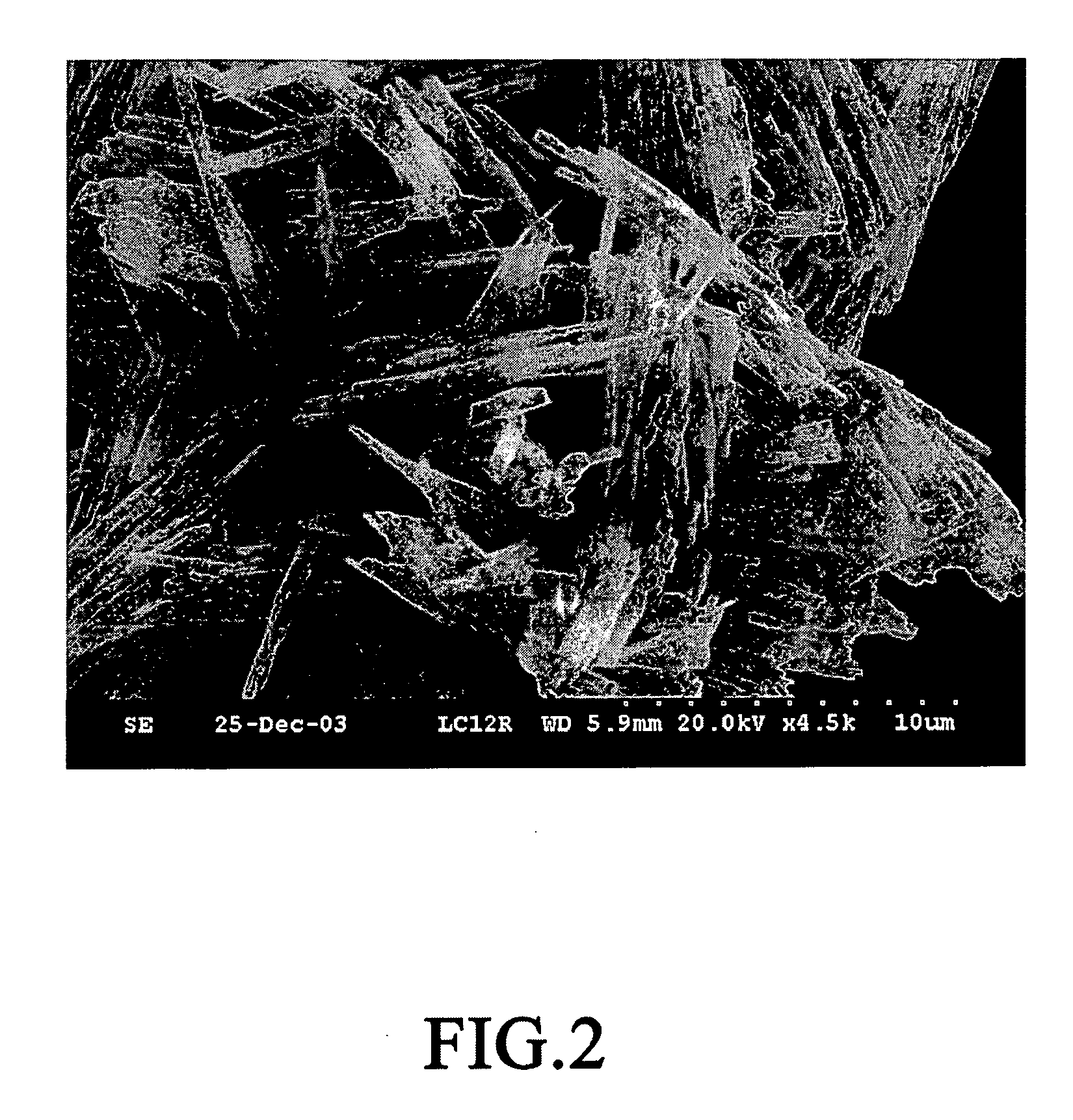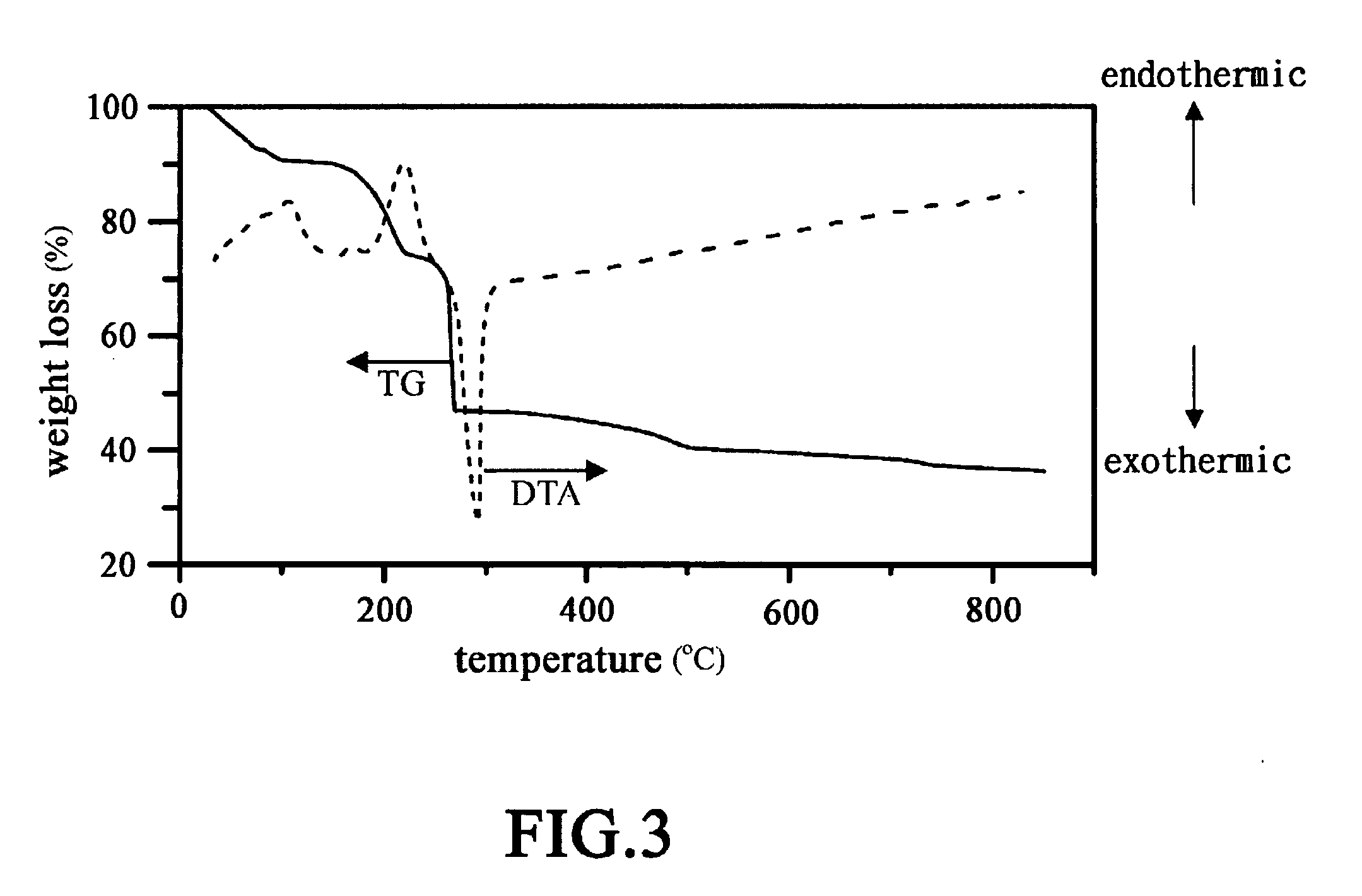Process of preparing lithium cobalite powders
a lithium cobalite and cobalite technology, applied in the field of lithium cobalite powder processing, can solve the problems of low capacitance, safety concerns that have not yet been completely overcome, and the commercialization of lithium nickelate in the field has not yet succeeded, and achieves the effects of low cost, uniform composition, and easy operation
- Summary
- Abstract
- Description
- Claims
- Application Information
AI Technical Summary
Benefits of technology
Problems solved by technology
Method used
Image
Examples
example
[0036] 4.11 g of lithium nitrate, 17.46 g of cobalt nitrate and 15.13 g of oxalic acid are respectively dissolved in 20 ml of de-ionized water. The lithium nitrate aqueous solution and the cobalt nitrate aqueous solution are mixed, and then the oxalic acid aqueous solution is added. The mixed solution is stirred at room temperature until its pH is constant. The solution is heated to 80° C. for 2 hours. Then the temperature is increased to 100° C. to dry up the solution so as to obtain dried gels.
[0037] Thereafter, the dried gels are added at 700° C., 750° C., and 800° C. with 10° C. / min of temperature increasing rate for 12 hours. Then the sintered powders are air cooled to room temperature. Thereby, lithium cobalite powders formed at different temperatures are obtained.
[0038]FIG. 2 is a scanned electron microscope picture of dried gel obtained in Example 1. From the picture, it is found that the oxlate gel is in the shape of a tetragonal column.
[0039]FIG. 3 shows the results of ...
example 2
[0043] In order to determine the performance of an electrochemical battery made of lithium cobalite powders, the product obtained by sintering at 800° C. in Example 1 is used as a cathode sheet in this example.
[0044] The obtained lithium cobalite powders, acetylene and poly o-difluoroethylene are thoroughly mixed at 85:10:5 of weight ratio. N-methyl 2-pyrrolidine (NMP) of the proper amount is added to the above mixture to obtain a uniform paste. The paste is applied over an aluminum foil by a blade. After the foil has been dried for 3 hours, it is rolled and cut into a plurality of cathode sheets.
[0045] Lithium metal is used to make the anode sheet of a battery. The electrolyte is a non-aqueous 1M LiPF6 (ethylene carbonate, diethyl carbonate and dimethyl carbonate at a weight ratio of 1:1:1).
[0046] A coin type battery that has been assembled is subjected to an electrochemical analysis by means of Arbin BT2000, at a charging rate of 0.1 C and a stopping voltage of 3.0V-4.2V. The r...
PUM
 Login to View More
Login to View More Abstract
Description
Claims
Application Information
 Login to View More
Login to View More - R&D
- Intellectual Property
- Life Sciences
- Materials
- Tech Scout
- Unparalleled Data Quality
- Higher Quality Content
- 60% Fewer Hallucinations
Browse by: Latest US Patents, China's latest patents, Technical Efficacy Thesaurus, Application Domain, Technology Topic, Popular Technical Reports.
© 2025 PatSnap. All rights reserved.Legal|Privacy policy|Modern Slavery Act Transparency Statement|Sitemap|About US| Contact US: help@patsnap.com



